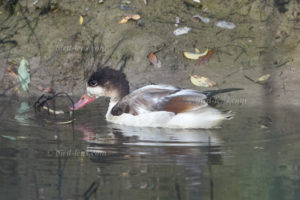 As far as the eye can see, the agricultural steppe spreads in the area of the Niederen (Lower) Flaeming in the south of Brandenburg. The area covers the intensive agricultural land west, south and east of Jüterbog, from Marzahna in the west to Dahme / Mark in the east. The flat undulating, slightly hilly landscape at an altitude between about 70 and 90 m above sea level. NN covers an east-west extension of nearly 50 km and covers an area of up to 400 km². With an average annual temperature of 9.2 ° C and an annual precipitation of 561 mm, the plateau is slightly warmer and much drier than the German average. The area is an agricultural stronghold.
As far as the eye can see, the agricultural steppe spreads in the area of the Niederen (Lower) Flaeming in the south of Brandenburg. The area covers the intensive agricultural land west, south and east of Jüterbog, from Marzahna in the west to Dahme / Mark in the east. The flat undulating, slightly hilly landscape at an altitude between about 70 and 90 m above sea level. NN covers an east-west extension of nearly 50 km and covers an area of up to 400 km². With an average annual temperature of 9.2 ° C and an annual precipitation of 561 mm, the plateau is slightly warmer and much drier than the German average. The area is an agricultural stronghold.
All the more astonishing is, that again and again bird species are encountered whose occurrence is not necessarily to be expected. This happened in early September with a young Common Shelduck (Tadorna tadorna), too. The bird flew in in the early morning to a heavily agriculturally used area just south of Jüterbog on a shallow pond and was spotted for about 2 hours in search for food. That the landscape, which is only slightly wavy and except for some landscape features such as rows of trees or windbreak hedges completely under the plow, must offer one or the other natural variety showed again a small group of Egyptian Goose (Alopochen aegyptiacus), which passed by several times.
The Common Shelduck must be a 1st cy bird; perhaps from the dredging lakes near the river Elbe, as they are situated e.g. in the middle Elbe region south of Wittenberg near Mühlberg (Brandenburg). In this respect, it would be a young bird, which still has to search for a territory and therefore flew 30 km North.
Otherwise, there are “unusual” birds, of course, at migration times. The late summer or autumn seems particularly productive. For example a flock of Dunlins (Calidris alpina) were seen in mid-September.
The slightly hilly steppe-like landscape with its wide horizons attracts occasionally Northern Wheatears (Oenanthe oenanthe) on migration. Northern Wheatears then stay for a few days in the rolling hills of the Lower Fläming.
Actually, I also keep an eye out for Eurasian Dotterels (Charadrius morinellus). Thus, just one morning, early after sunrise, a Eurasian Dotterel could be found flying out of a field ridge on the Langen Ruecken south of Lübben which is only 30km to the east. The bird called, but quickly gained altitude and then disappeared to the south. The further search on site was unsuccessful; keeping in mind however that the area is not easy to overlook due to the vegetation growth and the relief of the area. This landscape near Lübben west of the Spreewald was already a resting site for Eurasian Dotterel in May 2016. Overall, however, the Eurasian Dotterel seems to pass through in Brandenburg with much less frequently than, for example, in the Eifel .
But you should not stop looking for the Dotterels. During one of the recent tours in the area, two one-year-old Red-footed Falcons (Falco vespertinus) could be found at a pumping station near Bochow on power lines. After a chase by a Common Kestrel (Falco tinnunculus), both birds disappeared over the meadows in an easterly direction. Thus, the two Red-footed Falcons stayed probably only a very short time in the area.
To cope with the growing demand for top shots of the rarer species of the Palearctic Bird-Lens is keen to enrich the range of pictures of birds you can find in the western Palearctic. Trips to common and to remote places to capture images not only of rare birds of western Palearctic were very successful. The nice image of the blog is only a first impression, what you will find in the gallery in the “Picture Shop” very soon. Just give bird-lens.com a message, if bird-lens.com could serve you with an image needed before the new pictures are online.